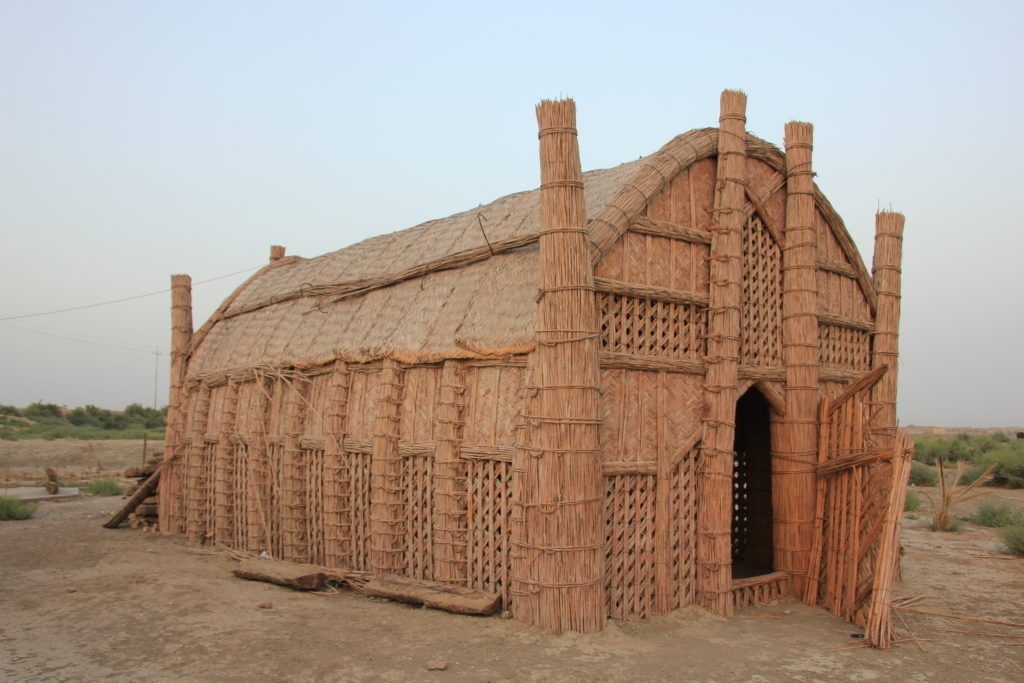
Reed bundle construction
What Is It?
Buildings made from bundles of reeds are one of the oldest types of ecological construction techniques in the world. A carved elevation from around 3,300 BCE depicts an image of a typical Sumerian “mudhif,” and such structures are still built by the Marsh Arabs, or “Ma’dan,” in the marshlands of southern Iraq.
What Does it Do?
Nature Iraq Organization’s Reed House Project video shows how a group of community members and expert craftspersons can erect a mudhif in a single day, using cheap and abundant local materials. A mudhif must be rebuilt every ten years or so, and is often moved to follow water flows in the marshland, thus ensuring that knowledge of their construction is regularly passed down within the community.
How Can It Be Accessed?
G. Broadbent’s essay The ecology of the mudhif gives good background on the historical and contemporary practice. Similar building methods can be found wherever wetlands create abundant reed-type plants and grasses, or where trees can be coppiced or pollarded to promote vigorous growth of new shoots. Rasha Al-Tameemi explores the eco-cultural rootedness of the practice in her study Reading the Cultural Specificities of the Iraqi Marsh Arabs from their Landscape.
Note: The reed bundle houses of southern Iraq are a reminder that the building of shelters takes place in a context—both an ecological context, and a political one. The Mesopotamian marshes have been subject to a series of attempted drainings, from British colonists to the government of Saddam Hussein. The United Nations has described the size and scale of the resultant ecosystem loss as a “tragic human and environmental catastrophe” on par with Amazon rainforest deforestation. But recently, many Ma’dan communities have begun to dig up the dykes and re-flooded the marshes, in an attempt to resume their traditional way of life.